Since Apple debuted the Vision Pro headset, there has been a sharp shift in immersive technology experiences. These experiences have provided multiple possibilities in a variety of industries. If you are in real estate, for example, Vision Pro capabilities let you visually tour a home or property. This saves both time and resources.
To truly benefit from this shift, you first need to consider the cost to develop a VisionOS app or convert your current iOS app into one that works with the Apple Vision Pro. Only then can you unlock its potential for your business.
The Vision Pro headset is priced at around $3499. But how much does it cost to build an app for it? There is no fixed number. The VisionOS app development cost depends on several factors like complexity, feature sets, and developer location.
Before diving deeper into these details, it’s important to understand what Vision Pro apps are and how the Vision Pro platform works.
Let’s first define what Vision Pro actually is.
Understanding VisionOS
Apple’s innovative VisionOS, the first spatial operating system, has broken free of the limitations of traditional displays. Leveraging hand, eye, and voice commands, Vision Pro offers a revolutionary way to interact with apps. Launched in February 2024, Apple Vision Pro promises to reshape how we work, connect, collaborate, relive memories, and enjoy entertainment.
A brand-new App Store brimming with over a million applications compatible with iOS and iPadOS complements Vision Pro’s unique features. Apple’s CEO, Tim Cook, aptly declared, “The era of spatial computing has arrived.”
Vision Pro, with its intuitive user experience, is poised to transform our connections, creations, and explorations. The growing number of Vision Pro use cases across industries reflects its potential in both professional and personal environments.
However, developing apps to leverage these groundbreaking features comes at a cost. The exact cost depends on several factors that we’re exploring in the next section.
Not sure where to begin with building a VisionOS app? Our detailed guide on how to hire VisionOS developers can help you get started with the right team.
Factors Affecting VisionOS App Development Cost
Building and submitting the VisionOS app to the app store requires careful budgeting. To do this, let’s look at the important factors influencing the entire cost:
Complexity of the App
The more complex and feature-rich your app is, the more development time and resources it will demand. Complex features like object detection, geographical mapping, and complex augmented reality interactions would need more sophisticated development methodologies and maybe specialist developers, resulting in a higher cost to develop the VisionOS app.
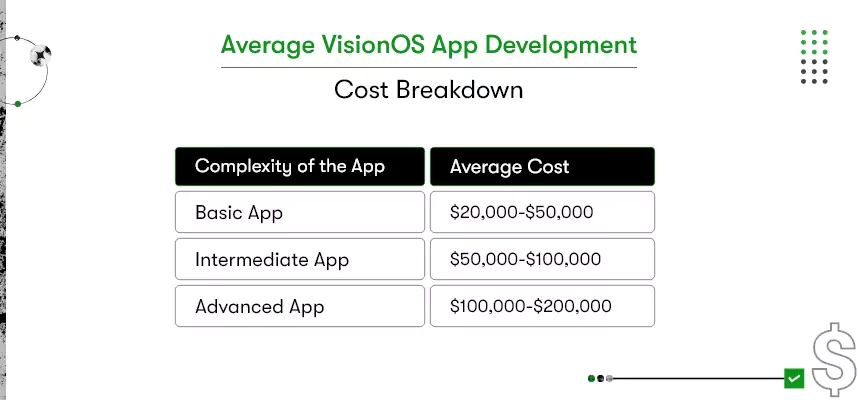
Design
When you spend more money in constructing your house, the better decor and functionality it has. Similarly, a well-designed user interface and experience may set your app apart from the competitors and make using it more user-friendly.
To create a top-notch user interface and user experience design, it is necessary to do detailed user research, build wireframes and prototypes, and pay close attention to visual design details. The total cost to make a VisionOS app UI/UX includes the time, effort, and dedication required for each of these factors.
Features
VisionPro app development is influenced by the addition of certain functionalities. These features are a must-have. However, VisionOS app development cost depends on the degree of advancements brought into these features.
Many of these innovations align with current Apple Vision Pro trends, for example:
- Spatial Awareness: Spatial awareness is the foundation of VisionOS. By using capabilities like passthrough cameras and LiDAR scanners, your app can acquire a thorough awareness of the user’s actual surroundings.
This enables your software to easily integrate with the actual environment, resulting in a genuinely immersive experience that goes beyond the boundaries of standard displays.
- Eye and Hand Tracking: VisionOS provides intuitive control techniques that extend beyond typical buttons and touchscreens. Designing your software to adapt to natural eye gazing and hand motions results in a user-friendly experience that seems easy.
- Spatial Audio: Integrate Spatial Audio into your app to generate dynamic, three-dimensional sound effects that respond to the user’s head movements. This may dramatically change the user experience.
- 3D Content and Environment: VisionOS defies conventional wisdom about flat screens. RealityKit with SwiftUI allows you to create realistic 3D objects that interact with the user’s environment. This enables unmatched user engagement.
Tech Stack
Especially when including sophisticated technologies for feature-rich apps, the technology stack you choose substantially impacts the total cost to develop an Apple Vision Pro app.
Building sophisticated visionOS applications requires a solid technology stack. By using these technologies, we can guarantee the smooth incorporation of visionOS features and use AR to its maximum potential for outstanding app experiences.
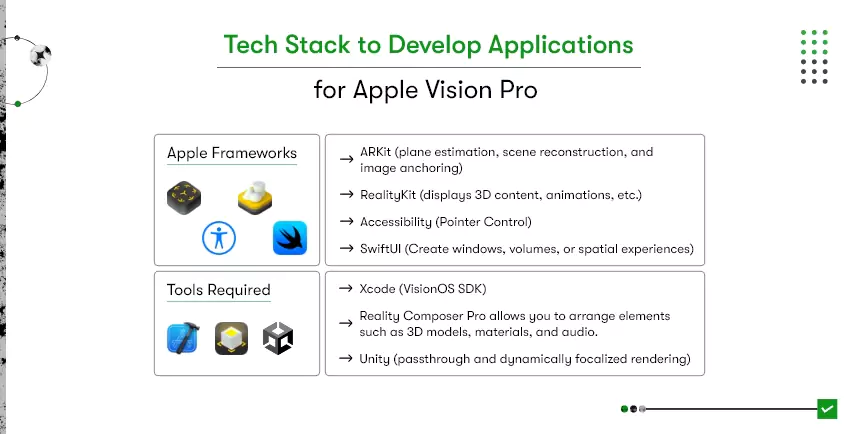
Testing
Vision Pro apps must be thoroughly tested to avoid motion sickness, lag, or interface issues, especially in industries like fashion, where user experience is everything. This level of testing requires more development time, skilled QA professionals, and specialized automated testing tools.
These factors can impact the VisionOS App Development Cost significantly. When planning immersive experiences like virtual runways or interactive lookbooks, brands should factor in the full cost to develop a VisionOS app, including post-development testing, to ensure a smooth, high-quality experience for users.
Project Timeline
The total VisionOS app development cost is significantly affected by the development schedule. Project expenses tend to rise when shorter schedules force the inclusion of more developers and resources.
Whether you’re starting from scratch or planning to convert an app to VisionOS, thorough preparation and practical timetables are necessary for efficient expense management.
Regular Maintenance
Once the VisionOS app develops, the cost doesn’t stop there. However, this is not much. To ensure that the app runs smoothly, without any bugs, it is necessary to regularly check it, fix bugs, if any, and also, add a few new features based on user input.
Location of the Developers
The location plays an important role in determining the cost to make a visionOS app. When you hire visionOS developers, it matters where you are creating your app. If you are making your app in America, it will be expensive. However, the same app can be developed in India or any other country in Asia for far less cost.
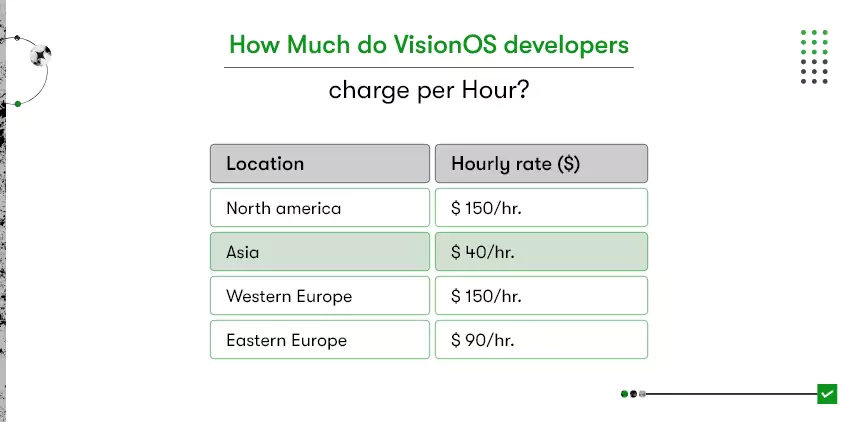
Advantages of VisionOS App Development
Enterprises can now create apps on the VisionOS platform to increase customer engagement and distinguish themselves from competitors. One of the biggest advantages is that VisionOS apps can be an extension of iOS and iPad apps.
It offers the possibility to convert apps to VisionOS, giving businesses an edge when comparing apple vision pro vs meta quest 3.
Let’s take a look at a few more advantages.
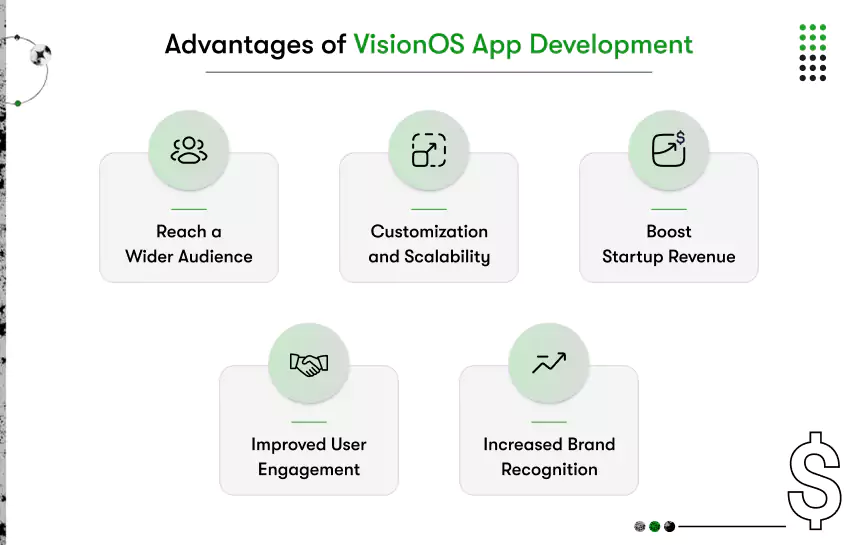
Reach a Wider Audience
Customers can have convincingly immersive experiences with the help of VisionOS apps. A company might develop and succeed by reaching out to more consumers, exploring new markets, and improving brand awareness with a wider reach.
Customization and Scalability
You may customize the user experience with AR app development to meet specific brand requirements, giving the product a one-of-a-kind, customized feel. Moreover, Vision Pro app development can rapidly grow to accommodate rising user demand, allowing organizations to grow and develop.
Boost Startup Revenue
VisionOS enhances how startups engage users and drive revenue through immersive AR and VR experiences. In sectors like retail, for example, VisionOS allows customers to virtually try on clothing, accessories, or even makeup using spatial technology.
This interactive experience boosts user confidence in purchase decisions, reduces product returns, and increases time spent on the app or platform. As a result, businesses see improved engagement, higher conversion rates, and a direct impact on overall sales growth.
This kind of innovation helps startups differentiate themselves and capture more market share in competitive industries.
Improved User Engagement
By using AR and VR technology, users can completely engage themselves in virtual worlds, allowing for realistic interaction with digital information. Applications built on VisionOS provide consumers with fascinating and unforgettable experiences, whether it’s visiting a virtual showroom, going on a virtual trip, or participating in interactive storytelling.
Increased Brand Recognition
Businesses that use VisionOS technology may establish themselves as cutting-edge and forward-thinking brands, improving their reputation and market presence. Businesses that adopt this revolutionary technology could increase brand awareness and position themselves as industry leaders.

Apple Vision Pro Use Cases: Exploring Industry-Wide Innovations
It promotes innovative immersive experiences by using the capabilities of augmented reality (AR) and virtual reality (VR). VisionOS app development offers a large and diverse terrain for creativity, from reinventing healthcare and education to redefining gaming and real estate.
The list of top Vision Pro Apps has already started taking shape. Here, explore the fascinating Vision Pro use cases from various industries.
Media and Entertainment Industry
Instead of watching movies on flat screens, users can watch them in 3D in a virtual movie theater environment, where they feel that they are part of the action. In fact, users can also experience concerts and live events from where they are.
eCommerce
The augmented reality features and real-time information presentation that Apple Vision Pro offers can greatly improve the shopping experience. Customers will be able to interact more with the product information and virtually try on clothing.
Retailers might offer customized promos and product recommendations based on a user’s past purchases and interests. To bring these features to life, businesses must design and submit visionOS apps that align with customer needs and platform capabilities. This can enhance the shopping experience for customers and have a positive impact on product sales.
Gaming
In VisionPro app development, a virtual environment is created where the user can interact with game components in real time. Vision Pro apps dynamically and completely engage players by fusing virtual games with real-world objects, thereby blurring the boundaries between the physical and digital worlds.
Fashion
Traditionally, fashion shows were limited to select guests and took place at exclusive physical venues. With VisionOS, brands can now recreate these shows as fully immersive virtual events, allowing global audiences to experience new collections from the comfort of their homes. These spatial experiences go beyond passive viewing, users can walk around digital runways, explore 3D garments, and interact with the collection in real time.
This shift not only broadens reach but also increases engagement, brand visibility, and customer loyalty. For fashion brands exploring these experiences, understanding the cost to make a VisionOS app becomes a crucial step in planning.
Since features like live-streamed spatial events and interactive garment previews require advanced design, the VisionOS App Development Cost will depend on the level of immersion and interactivity needed. Still, the return on investment can be significant in terms of digital reach and user engagement.
Healthcare
The healthcare industry is quickly recognizing the value of Vision Pro apps in improving training, diagnosis, and treatment planning. With VisionOS, medical professionals can interact with 3D anatomical models, simulate surgeries, and practice real-life scenarios in immersive environments. These experiences improve decision-making, reduce the risk of errors, and enhance patient care outcomes.
Hospitals and medical institutions exploring these benefits often want to understand the VisionOS App Development price before adopting the technology. Since features like spatial simulations and real-time diagnostics require advanced development, the cost to develop an Apple Vision Pro App will vary based on complexity and required precision.
However, the long-term impact on training efficiency and treatment quality makes it a strategic investment for forward-thinking healthcare providers.
Real Estate
Apple Vision Pro transforms real estate by offering immersive property tours and virtual staging. Buyers can explore homes in 3D without visiting in person, walking through spaces as if they were physically there. Agents can showcase multiple properties remotely, saving time and costs.
Virtual staging allows clients to visualize furniture and design options in real time, enhancing decision-making. This technology also supports interactive floor plans and neighborhood explorations, giving buyers a complete experience.
Integrating VisionOS apps helps real estate businesses boost client engagement and streamline the buying process with cutting-edge, immersive tools.
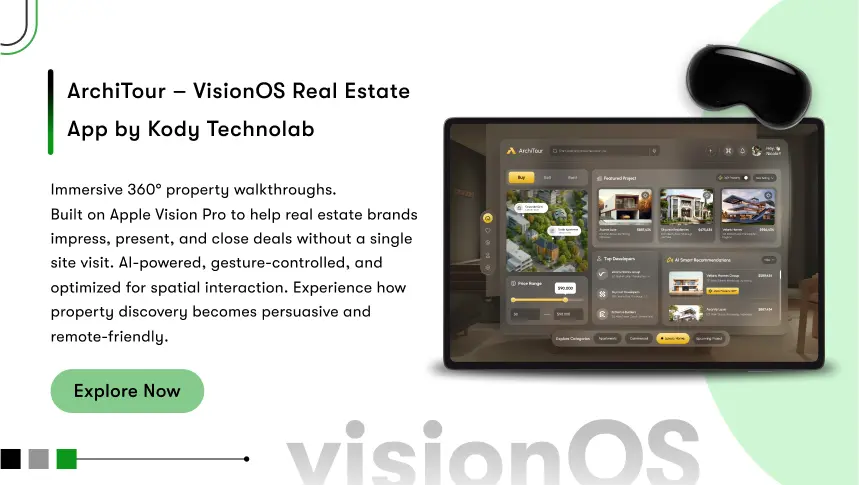
Launch your Apple Vision Pro App with Kody Technolab Limited
VisionOS is leading the way, bringing with it a new age of possibilities and innovation. In order to effectively manage their budgets, organizations need to understand the aspects that influence the VisionOS app development cost as they negotiate its complexity.
Innovative, compliant, and reasonably priced VisionOS app solutions are our forte here at Kody Technolab Limited. As a VisionOS app development company, we provide you with ground-breaking VisionOS app development solutions. We have the know-how to make your VisionOS app idea a reality, not only a potential. Contact our team to hire VisionOS app developers now!
FAQ
1. What is VisionOS app development?
VisionOS app development focuses on building apps for Apple’s spatial operating system. This operating system is specially tailored to augmented reality (AR) and mixed reality (MR) experiences. Developers use VisionOS to create immersive programs that smoothly integrate virtual and real-world features. Advanced AI/ML technologies, spatial computing, and 3D visualizations make this feasible. The final result is a dynamic and engaging experience for the user.
2. What types of apps can be developed with VisionOS?
The options are endless! VisionOS can support a broad variety of capabilities, from customer-facing applications for loyalty programs and product catalogs to internal solutions for inventory management and data analysis.
3. How much does it cost to develop a VisionOS app?
The VisionOS app development costs are determined by a variety of criteria, including the app’s complexity, the amount of features, the design requirements, and the development team’s rates. It is difficult to provide an accurate quote without detailed project specifics. For precise pricing estimates, connect with a professional app development provider.
4. Can you help me convert the app to VisionOS?
Yes, our team will guarantee a smooth and flawless migration, maintaining all of your app’s data and functionality while exploiting visionOS’s unique features and capabilities.
5. How long does it take to develop a Vision Pro app?
The amount of time required to develop an app is determined by its complexity. Simple applications can be developed fast, however more complex apps might take much longer.
6. Is it worth investing in VisionOS app development for my industry?
Absolutely. Whether you operate in retail, healthcare, education, fitness, or real estate, VisionOS enables immersive, spatial experiences that boost user engagement and brand innovation. VisionOS is not limited to entertainment. It supports serious business goals like better customer retention, smarter training, and faster conversions.
7. What’s included in the VisionOS App Development Cost?
The VisionOS App Development Cost includes planning, UI/UX design for spatial interactions, development (frontend and backend), 3D content creation, QA testing, and deployment. If you’re creating an advanced app with AR interactions and 3D animations, expect added costs for spatial modeling and performance optimization.
8. Can I convert my existing iOS app to VisionOS?
Yes. If you already have an iOS app, we can convert your app to VisionOS by reusing its core functionality while adapting the UI and interaction model to work in a spatial environment. This reduces development time and makes the transition more cost-effective.
9. What are the biggest challenges in developing VisionOS apps?
Designing for spatial computing is a new paradigm. Some challenges include motion sickness prevention, spatial UX accuracy, 3D asset optimization, and limited early hardware testing access. Working with experienced VisionOS developers helps avoid these pitfalls.
10. Can VisionOS apps support real-time collaboration or multi-user experiences?
Yes. VisionOS supports real-time data sync, allowing multiple users to interact with the same virtual content in real-time. For example, teams can brainstorm using shared 3D whiteboards, or customers can shop together virtually. These features can be customized to your use case.
11. How can I estimate the cost to make a VisionOS app for my business?
To estimate the cost to make a VisionOS app, you need to define your use case, required features (like voice interaction, gesture controls, or 3D modeling), and the level of spatial complexity. We offer a free consultation to help you scope your project and receive a clear estimate.
12. What makes VisionOS different from other AR platforms?
VisionOS is Apple’s first operating system built entirely for spatial computing. It offers tighter integration with Apple’s ecosystem, superior eye tracking, hand control, and access to millions of iOS-compatible apps. This gives it a major edge in performance, ecosystem reach, and cost to develop a VisionOS app compared to generic AR tools.

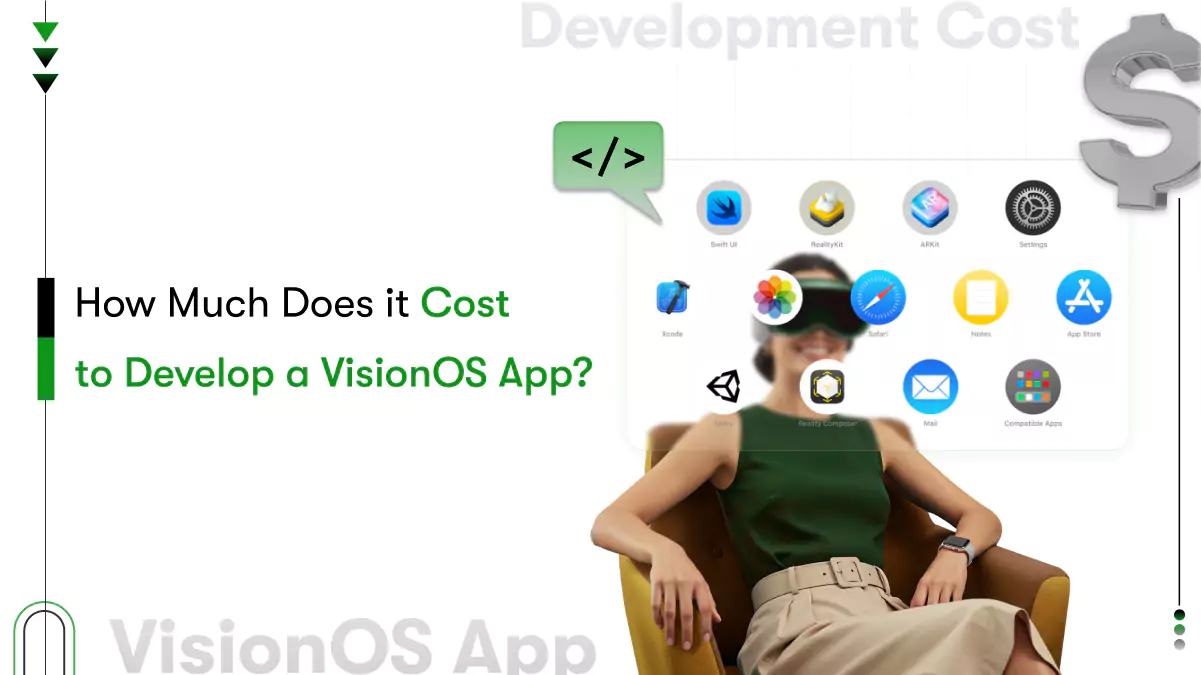
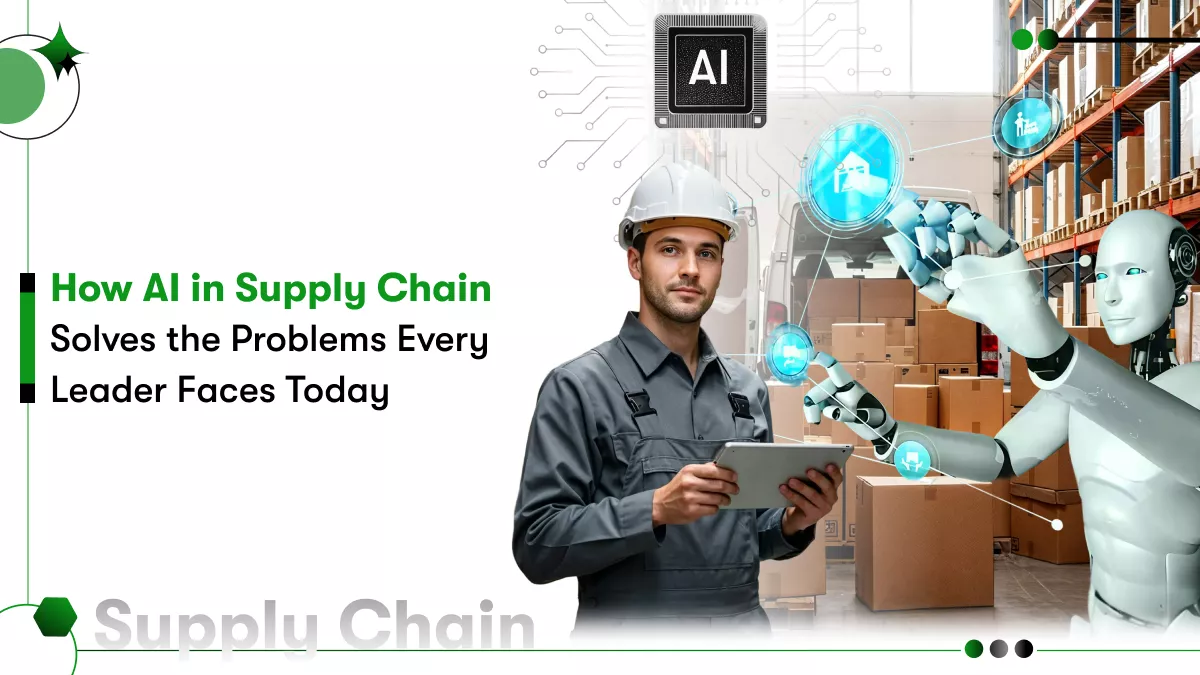


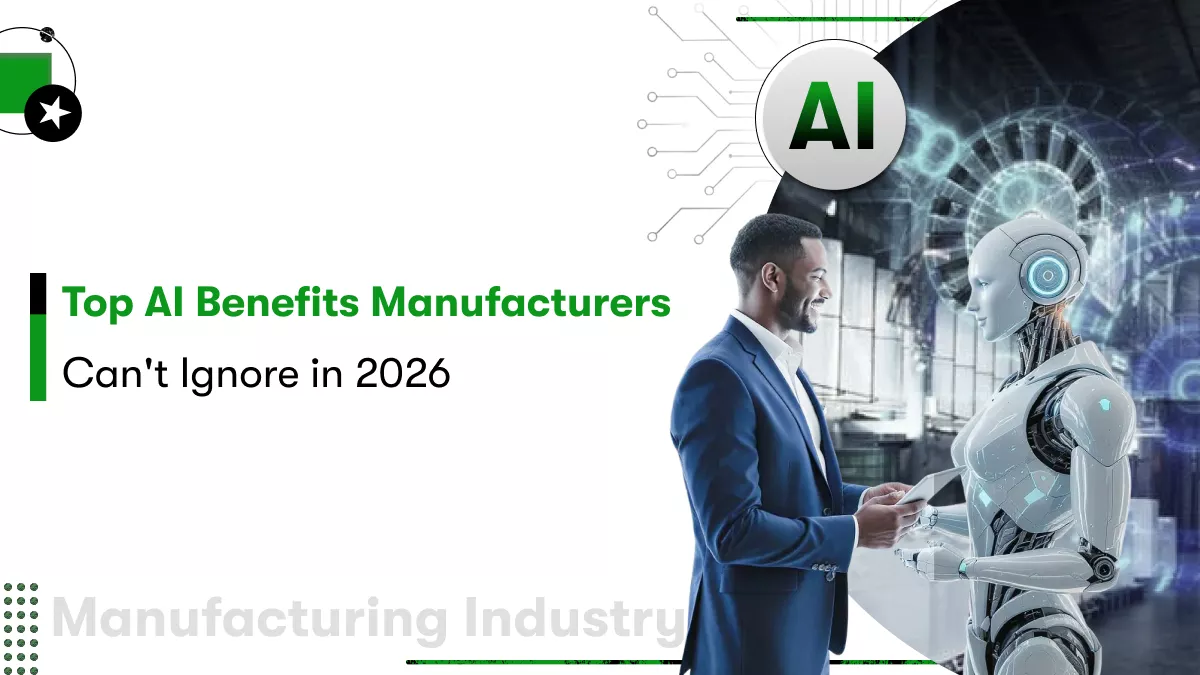
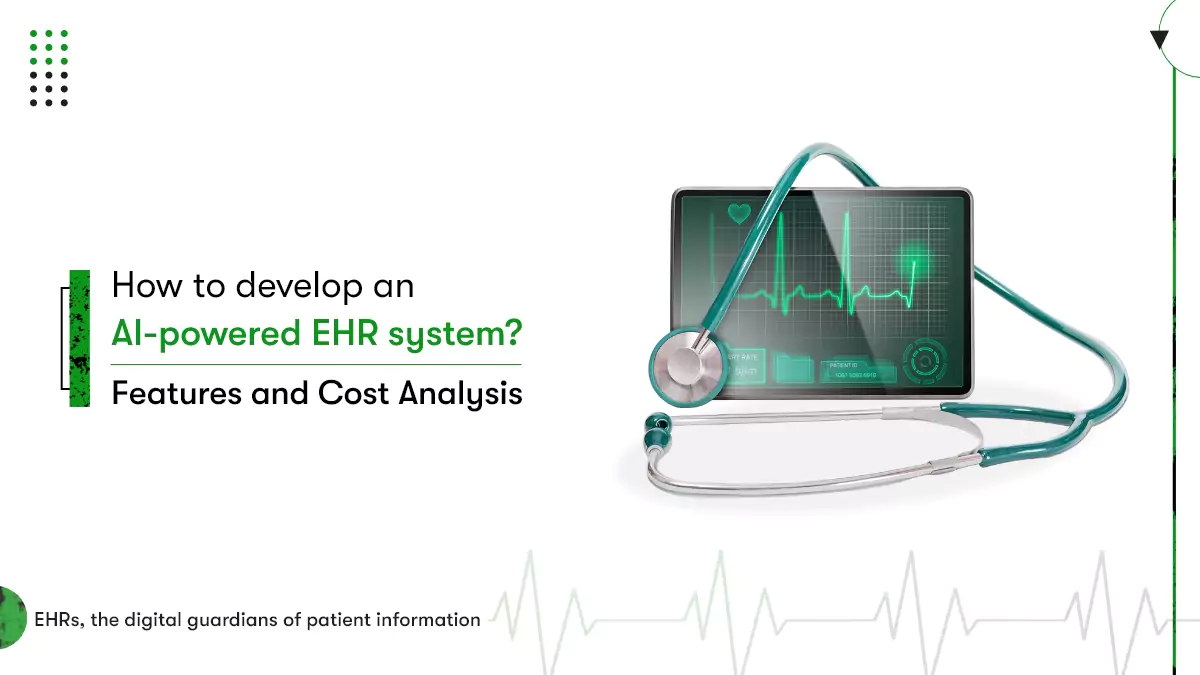






 Contact Information
Contact Information